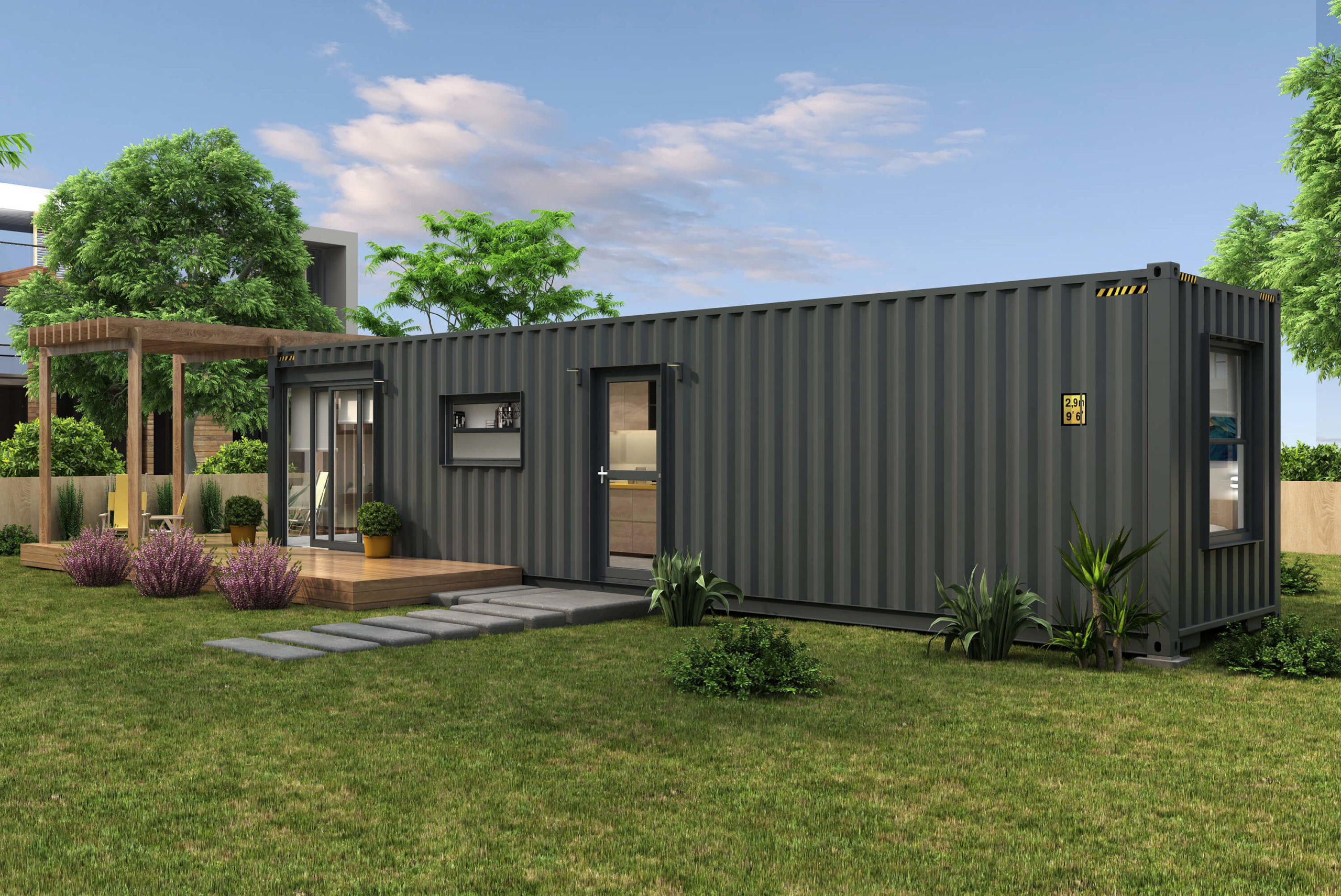In recent years, more and more people are choosing to live off the grid, and it’s easy to see why. Living off-grid offers the opportunity to reconnect with nature and live sustainably within your means. Live Off Grid provides a variation of shipping container and tiny houses to people all over the UK, varying in size, features and style.
While both options offer the freedom and self-sufficiency that comes with off-grid living, they are very different in terms of design, cost, and functionality. We’ll explore the differences between the two off grid options and help you decide which one is the right fit for you.
Shipping Container Homes
Re-purposed shipping container homes have become increasingly popular over the years. Shipping containers are made from high-grade steel and are designed to withstand extreme weather conditions, making them ideal for off grid living. They are also incredibly durable and require little maintenance, making them a low-cost option for those looking to live off grid.
One of the primary benefits of a shipping container home is its size. These homes are typically larger than tiny homes, with our container options measuring either 20 or 40 feet. This makes them ideal for families or those who want more space, whilst still not impeding too much on the natural landscape. Additionally, shipping container homes are incredibly versatile and can be customized to fit your needs. They can be stacked, joined together, and modified to create unique and functional living spaces.
Tiny Houses
Tiny houses, on the other hand, are designed to be as small as possible whilst still providing comfortable living space. These houses can be built on a portable ground pad system or a galvanised trailer, meaning they can be easily transported from one location to another, making them ideal for those who want to be mobile and fluid in location.
One of the primary benefits of a tiny house is its affordability. Tiny homes are dramatically cheaper than traditional homes, making them an excellent option for those on a budget and looking to regain a feeling of financial control. Additionally, they are incredibly energy-efficient, with many tiny homes utilizing solar power to reduce their environmental impact.
Current Off-Grid Homes in the UK
According to recent statistics, there are currently around 25,000 off-grid homes in the UK, with the majority of them being located in rural areas. While shipping container homes are still relatively new to the UK, there has been a surge in their popularity over the past few years, with an estimated 1,000 currently in use.
Tiny homes have also gained popularity in the UK, with an estimated 10,000 in use. The tiny home movement is still relatively new to the UK, but it is growing rapidly as people look for affordable and sustainable housing options.
Choosing between a Shipping Container Home and a Tiny House
Deciding between a shipping container home and a tiny home comes down to your personal preferences and needs. If you’re looking for a larger living space, a shipping container home may be the best option for you. If you want to be mobile and more compact, a tiny home may be the way to go.
It’s also worth considering the location where you plan to live. Shipping container homes are ideal for rural areas, where there is plenty of space to accommodate their size. Tiny homes, on the other hand, are better suited to locations where space may be limited.
In conclusion, both shipping container homes and tiny homes offer unique benefits for those looking to live off-grid. Choosing between the two comes down to personal preference and needs. Shipping container homes offer more space and customization options, while tiny homes are more affordable and mobile. Regardless of which option you choose, living off the grid is an excellent way to reconnect with nature and live sustainably within your means.
Reset, reconnect and return to nature. Live Off Grid.
For more information on how to Live, Stay or Invest Off Grid, please contact us at [email protected] today.









